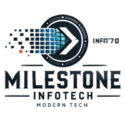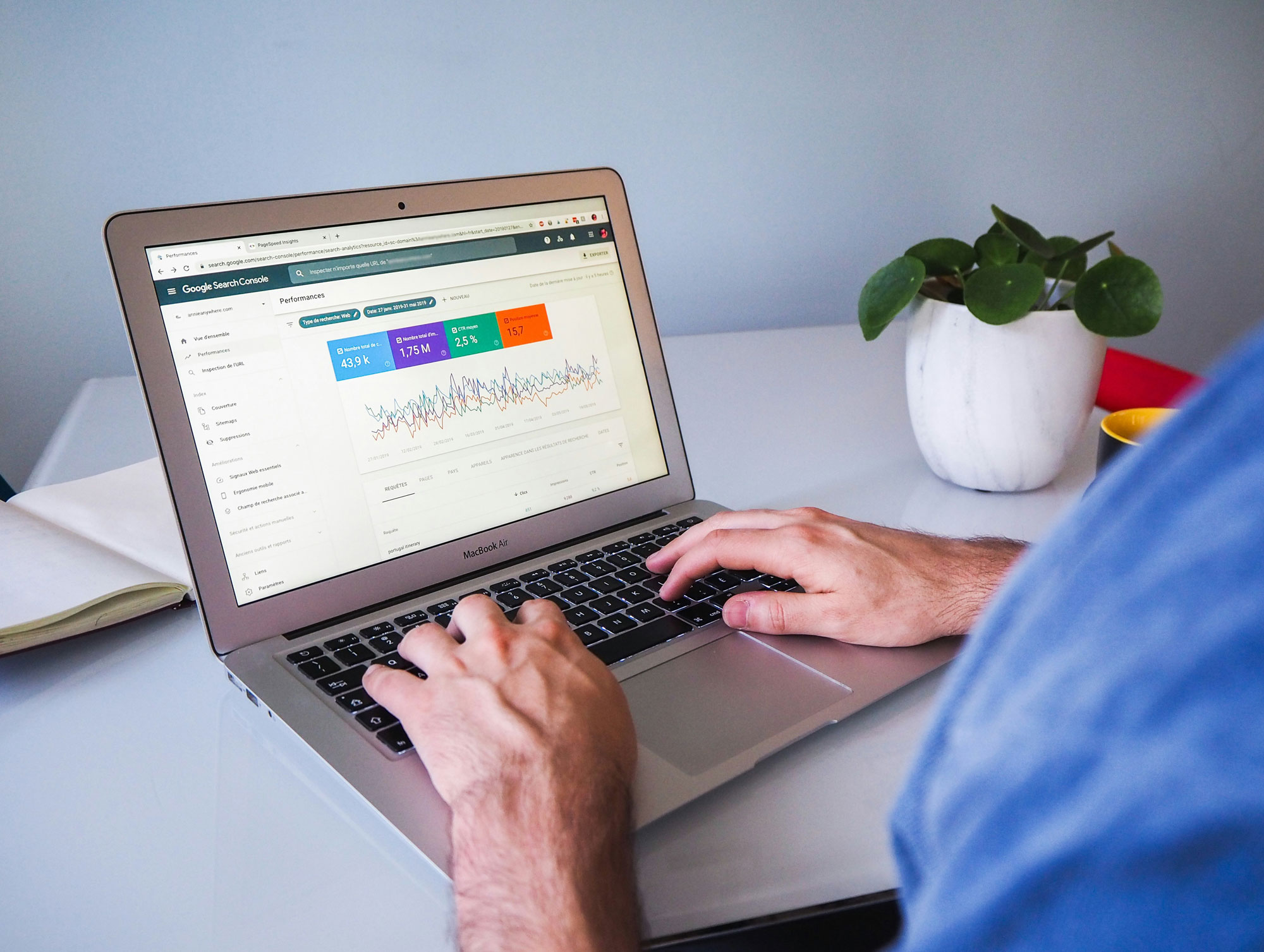The Dallas Dash: How a Blazingly Fast Website Can Make You the Digital Front-Runner
Dallas. The very name evokes speed, ambition, and a relentless drive forward. From the lightning-fast business deals in Uptown to the rapid expansion of the tech corridor, this city operates at a high velocity. So, if your Dallas business isn’t reflecting that same pace online, you’re not just falling behind – you’re actively giving your competitors a head start.
In 2025, the digital landscape is as competitive as the Dallas real estate market. Every business is vying for attention, and the attention span of your potential customer is shrinking by the nanosecond. They don’t just want information; they want it now. And if your website keeps them waiting, even for a moment, they’re gone. Off to your faster competitor, who understands that website speed isn’t just a technical detail; it’s a critical competitive advantage.
Think of it this way: if your physical storefront in Highland Park had a door that jammed, a slow-moving queue, or products that took ages to appear, you’d fix it immediately. Your website is no different. It’s your 24/7 digital storefront, and if it’s lagging, it’s quietly pushing potential clients out the door and into the arms of a competitor who prioritizes a seamless experience.
So, how exactly does a blazingly fast website help you outrank competitors and win over customers in the bustling Dallas market? Let’s break down the undeniable power of speed.
The Core Pillars: Why Website Speed Matters So Much
Before we dive into the competitive edge, let’s understand the fundamental impacts of a slow website:
- User Experience (UX): The Impatience Factor. We are a generation of instant gratification. If a page takes more than a few seconds to load, frustration sets in. Users will hit the back button. It’s a quick, decisive “no” before they’ve even seen your services or products.
- Search Engine Optimization (SEO): Google’s Vetting Process. Google’s primary goal is to provide the best possible user experience. A slow website directly contradicts that goal. For years, page speed has been a confirmed ranking factor, especially for mobile searches.
- Conversions: The Lost Opportunity. Every millisecond of delay can translate directly into lost leads, abandoned shopping carts, and missed sales opportunities. If your checkout page lags, customers simply won’t complete their purchase.
Now, let’s connect these fundamentals to how speed helps you outrank your rivals here in Dallas.
How Blazing Speed Helps You Dominate the Dallas Digital Landscape
1. Google Prioritizes Speed: Winning the Search Ranking Game
Google isn’t just looking at keywords anymore; it’s looking at the experience your website provides. And speed is a huge part of that.
- Core Web Vitals (CWV): The Modern SEO Metric: Google now uses specific metrics called Core Web Vitals to measure user experience:
- Largest Contentful Paint (LCP): How quickly the main content of your page loads.
- First Input Delay (FID): How quickly your page responds to user interaction (e.g., clicking a button).
- Cumulative Layout Shift (CLS): How stable your page is as it loads (no elements jumping around).
- Sites with strong CWV scores are favored in search rankings. If your Dallas competitors’ sites are sluggish in these areas and yours is optimized, you gain a significant advantage in Google’s eyes.
- Mobile-First Indexing: The vast majority of searches, especially local “near me” searches, happen on mobile devices. Google predominantly uses the mobile version of your site for indexing and ranking. If your mobile site loads slowly, you’re penalized. A fast mobile site ensures you’re optimized for where most of your Dallas customers are searching.
- Crawl Budget Efficiency: Google’s bots “crawl” your website to understand its content. For slower sites, Google might spend less time crawling, meaning fewer pages are indexed, and updates take longer to be recognized. A fast site allows Google to crawl more of your content efficiently, leading to better visibility and faster indexing of new Dallas-specific content.
Dallas Context: In a metropolitan area as competitive as Dallas, where every local business is fighting for prime search real estate, every fraction of a second you save in load time can be the difference between ranking on page one or getting lost on page two. It’s a silent, but incredibly powerful, weapon in your SEO arsenal.

2. Superior User Experience (UX): Keeping Dallas Customers Engaged
Dallas residents are busy. They’re on the go, making quick decisions. They don’t have time for a frustrating online experience.
- Lower Bounce Rate: When a website loads slowly, users “bounce” back to the search results or to a competitor’s site. A fast-loading site reduces this frustration, keeping visitors on your pages longer.
- Higher Pages Per Session: Users are more likely to explore multiple pages on your site if the navigation and loading are seamless. This means they consume more of your content, learn more about your services, and become more engaged with your brand.
- Improved Dwell Time: The longer a user spends on your site (without bouncing), the more it signals to Google that your content is relevant and valuable. This “dwell time” is a quiet but strong SEO signal.
Dallas Context: Imagine a potential client in Downtown Dallas quickly searching for a new restaurant during their lunch break. If your restaurant’s menu takes too long to load, they’ll immediately move to the next option. A fast site ensures your business stays in the running, captivating their attention from the first click.
3. Increased Conversions & Sales: Turning Visitors into Revenue
This is where the rubber meets the road. All the traffic in the world is useless if it doesn’t convert into actual business.
- Frictionless Conversion Journey: Whether it’s filling out a contact form for a Dallas consultant, adding items to a cart for a local e-commerce store, or booking an appointment for a Dallas salon, every step in the conversion funnel is sensitive to speed. Delays at critical points lead to abandonment. A fast site smooths this journey.
- Higher Trust and Credibility: A website that loads quickly and performs flawlessly feels more professional and reliable. This subconsciously builds trust with your potential customer, making them more comfortable sharing information or making a purchase. A slow, clunky site, conversely, can make you appear unprofessional or even untrustworthy.
- Better ROI on Advertising Spend: If you’re running Google Ads, social media campaigns, or other paid advertising to drive traffic to your website in Dallas, a slow site is essentially burning money. You pay for clicks, but if those clicks lead to a frustrating experience, your advertising budget is wasted on bounced visitors. A fast site maximizes the value of every paid click.
Dallas Context: In a sales-driven city like Dallas, every lead and every sale counts. A fast-loading website directly impacts your ability to capture that lead or close that sale, giving you a tangible competitive edge over businesses with slower online experiences.
4. Enhanced Brand Perception & Professionalism: Elevating Your Image
Your website is often the first, and sometimes only, impression a potential client has of your Dallas business.
- Modern and Efficient Image: A fast-loading, responsive website signals that your business is modern, efficient, and pays attention to detail. This reflects positively on your services or products.
- Reliability: Speed implies reliability. If your website is quick and seamless, users assume your business operations are equally smooth and dependable.
- Consistency with Dallas’s Vibe: Dallas is a city that prides itself on being cutting-edge and dynamic. Your online presence should mirror that. A slow website is incongruous with the city’s forward-thinking spirit.
Dallas Context: In a city brimming with strong brands and high expectations, professionalism online is non-negotiable. A fast website isn’t just about technical performance; it’s about projecting an image of competence and care that resonates with the sophisticated Dallas consumer.
5. Competitive Advantage in Local Search: Winning the “Near Me” Battle
For Dallas businesses targeting local customers, speed is king for “near me” searches.
- Google often gives preference to faster, mobile-friendly sites in local search results and the “local pack” (the map results with business listings).
- When someone in Bishop Arts searches for “coffee shop near me” on their phone, they want the answer instantly. If your coffee shop’s menu loads immediately and your competitor’s lags, guess who gets the foot traffic?
- This is particularly crucial for retail, restaurants, and service providers where immediate need drives search behavior.
Dallas Context: The local competitive landscape in Dallas is fierce. A fast-loading website directly translates to winning more local queries, capturing more impromptu visits, and dominating your neighborhood’s digital footprint.
How to Measure and Supercharge Your Website Speed
It’s clear that speed is a competitive imperative. So, how do you assess your current site and make it a digital speed demon?
- Utilize Free Tools:
- Google PageSpeed Insights: This is Google’s own tool, providing scores for both mobile and desktop, along with actionable recommendations. Pay close attention to your Core Web Vitals scores.
- GTmetrix: Offers detailed reports on load times, page size, and requests, with waterfall charts to identify bottlenecks.
- WebPageTest: Provides highly detailed, granular performance data from various locations and devices.
- Identify Common Speed Culprits:
- Large, Unoptimized Images: The #1 culprit. Huge image files drastically slow down pages.
- Excessive Use of Plugins/Scripts: Too many, or poorly coded, plugins can bloat your site.
- Poor Quality Hosting: Cheap hosting often means shared resources, leading to slow server response times.
- Unoptimized Code: Unminified CSS and JavaScript files.
- Render-Blocking Resources: Scripts that force the browser to wait before rendering content.
- Lack of Caching: Not storing frequently accessed data to serve it faster.
- Key Solutions (Often Requiring Professional Help):
- Image Optimization: Compressing images without losing quality, using modern formats (WebP), lazy loading images.
- Caching: Implementing browser caching and server-side caching to store frequently accessed data.
- Content Delivery Network (CDN): Serving your content from servers geographically closer to your users (e.g., Dallas customers get content from a Dallas server), speeding up delivery.
- Upgrade Your Hosting: Invest in reliable, high-performance hosting.
- Code Optimization: Minifying CSS, JavaScript, and HTML; deferring render-blocking resources.
- Regular Maintenance: Keeping your CMS, themes, and plugins updated.

Speed: The Unseen Force Driving Dallas Business Success
In the relentless race for market share in Dallas, every advantage counts. A fast-loading website isn’t just a technical nicety; it’s a fundamental requirement for a superior user experience, a critical factor for Google rankings, and a direct driver of conversions. It’s the silent force that can elevate your Dallas business above the competition, ensuring that when potential clients are looking for what you offer, you’re not just found, but you’re also experienced seamlessly, professionally, and immediately.
Don’t let a sluggish website hold your Dallas business back. Invest in speed, and watch your rankings climb, your customers engage, and your revenue accelerate.
Frequently Asked Questions (FAQs) about Website Speed and Outranking Competitors
Q1: How much does it cost to make a website load faster? A1: The cost varies significantly depending on the current state of your website and the extent of optimization needed. Simple fixes like image optimization might be low-cost, while complex code refactoring, migrating to better hosting, or implementing a CDN could involve a more substantial investment. Often, hiring a professional web development or SEO agency in Dallas is the most efficient way to achieve significant speed improvements.
Q2: Will improving my website speed guarantee I outrank my competitors? A2: No single factor guarantees top rankings. However, improving website speed is a critical component of a comprehensive SEO strategy. It directly influences user experience (a major Google ranking factor) and Google’s Core Web Vitals. While not a guarantee, it gives you a significant competitive edge and removes a common barrier to higher rankings.
Q3: How often should I check my website’s speed? A3: You should ideally check your website’s speed at least monthly using tools like Google PageSpeed Insights. After any major website updates, content additions, or plugin installations, it’s crucial to check speed immediately to ensure no new bottlenecks have been introduced.
Q4: My website is on WordPress. Are WordPress sites usually slow? A4: WordPress sites can be very fast, but they can also be very slow. It largely depends on how they are built and maintained. Common reasons for slow WordPress sites include: too many unoptimized plugins, a heavy or poorly coded theme, unoptimized images, and cheap or unoptimized hosting. With proper optimization, a WordPress site can easily load in under 2-3 seconds.
Q5: What are “Core Web Vitals” in simple terms? A5: Core Web Vitals are three specific metrics Google uses to measure the real-world user experience of a web page: * Largest Contentful Paint (LCP): How fast the largest piece of content (like a big image or heading) appears on the screen. (Aim for under 2.5 seconds). * First Input Delay (FID): How quickly your page responds when a user first tries to interact with it (like clicking a button). (Aim for under 100 milliseconds). * Cumulative Layout Shift (CLS): How much the content on your page “jumps around” while it’s loading. (Aim for a CLS score of 0.1 or less). These help Google understand if your page feels fast and stable to users.
Q6: Can I improve website speed myself, or do I need a developer? A6: Some basic improvements, like compressing images, can be done yourself with online tools. However, for more significant and technical optimizations (e.g., configuring server caching, implementing a CDN, minifying code, fixing render-blocking resources), it’s highly recommended to hire a professional web developer or a specialized SEO agency. They have the expertise to implement these changes safely and effectively without breaking your site.





